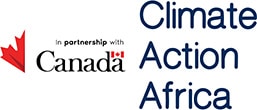Context
São Tomé and Príncipe, a small archipelagic developing country, is vulnerable to natural hazards, such as coastal and river flash floods, storms, and droughts. Frequent flash floods and severe storms accompanied by hail, thunder, lightning, and violent winds particularly threaten the country. The island country is already bearing the consequences of climate change. Sea level rise, changes in wave action, and river flood patterns are exacerbating extensive coastal erosion and flooding. Particularly critical are impacts to sectors including agriculture and fisheries, as nearly 20 percent of the nation’s workforce is employed in artisanal fisheries and most villagers are small-scale farmers. [Source: Global Facility for Disaster Reduction and Recovery (GFDRR)]
São Tomé and Príncipe is a Small Island Developing State (SIDS) highly vulnerable to the negative impacts of climate change, which are exacerbated by unsustainable practices. The São Tomé and Príncipe Biosphere Reserve, Natural Parks, and high value conservation areas) and communities living in and around them, are threatened by changing climatic conditions. As short-term extreme weather events increase in intensity and frequency, long-term surface and sea-water temperature and sea levels change, the livelihoods of the local communities and the health of ecosystems are becoming increasingly unsustainable, threatening the unique biodiversity of the island. The island of Príncipe is particularly vulnerable and has been declared a UNESCO biosphere reserve. However, facing multiple development challenges, São Tomé and Príncipe is lacking the means for securing long-term preservation.
In its updated Nationally Determined Contribution (NDC) under the Paris Agreement, São Tomé and Príncipe has indicated that given their national circumstances and financial incapacity to implement climate actions, they need to rely on international financing in the form of grants and concessions and that they intend to use financial mechanisms — created or implemented by the UNFCCC, by the Paris Agreement and by development partners to promote the elaboration and implementation of projects and programmes, technological transfer, and capacity-building.
Goal of TA
Overall objective: The overall objective of this technical assistance is to strengthen the resilience of the São Tomé and Príncipe Biosphere Reserves and high conservation value areas to the negative impacts of climate change.
The technical assistance will assist with the preparation of a Biodiversity and Adaptation Conservation project in São Tomé and Príncipe using the Adaptation Benefits Mechanism (ABM). Once implemented, the TA will attract cash flow to support the creation of a Biodiversity Conservation Trust Fund and / or to pay for the ongoing management of one or more areas of High Conservation Value in São Tomé and Príncipe.
The ABM is a results-based financed mechanism for enhancing resilience to the negative impacts of climate change on local communities and/or ecosystems. ABM can also be used for projects on the intersection between climate resilience and biodiversity protection, and in fact, there have been suggestions to adapt ABM to create a Biodiversity Benefit Mechanism or BBM. In such a case, the governance structure and project cycle of the ABM could be applied by simply replacing the word “adaptation” with “biodiversity”.
CAA Technical Assistance
Led by the Climate Risk Institute team, the technical assistance will contribute to the country’s NDC and National Biodiversity Strategy, helping to develop an ABM methodology to attract additional public and private finance to adaptation and biodiversity actions. Technical expertise was requested to:
- Develop key documents for resource mobilization via the ABM for at least one impactful and highly replicable intervention on the intersection between climate change adaptation and biodiversity preservation for São Tomé and Príncipe
- Ideally, and subject to final agreement with stakeholders, the intervention will focus on the island of Príncipe in its entirety, which is a UNESCO biosphere reserve.
- Collaborate with other organizations active in resilience and biodiversity in São Tomé and Príncipe, such as the UNDP, UN Environment and the African Development Bank, to ensure complementarity and strengthen synergies.
- Engage key stakeholders from local governments, local communities, women’s organizations, youth and other marginalized groups in stakeholder consultations during the preparation of a methodology, validation and approval of the selected ABM activity
Expected Outcomes (final results to be added when TA is closed)
This proposal will contribute mainly to the achievement of:
- Strengthening the business case for the Adaptation Benefits Mechanism for Small Island Developing States
- Raising awareness of the financial support available for adaptation and conservation actions
- Promoting the integration of gender, youth, and marginalized communities into solutions that address climate change and contribute to conservation practices across different sectors.



